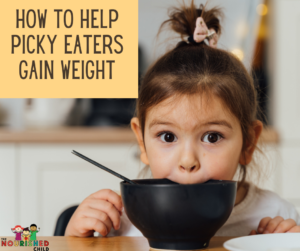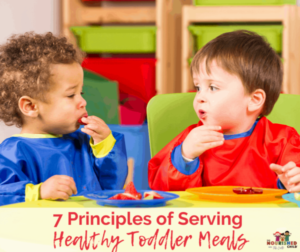Feeding Toddlers, Eating and Development
September 17, 2021
Feeding toddlers can test even the most patient parent. Why? For one, there’s so much unpredictability.
If you ever find yourself in a battle of wills at the table or try to reason or coax your toddler into trying something new to eat, you know what I mean. One day you have the most adorable compliant toddler, and the next day, you’ve got a moody, tantrum-prone tot on your hands.
What if feeding toddlers was easier? What if your toddler’s eating and behavior was understandably erratic? Expected, even?
As a pediatric nutritionist, I know how challenging toddlerhood can be on parents!
Toddlerhood can be a time of frustration, struggle and self-doubt for parents, and in a nutshell: a test of your parenting skills.
In this article, I’ll review how toddlers eating and development interact, plus share some of my best tips for feeding toddlers. Because understanding how the toddler develops, from his physical to emotional development, can help you get a grip on why your toddler eats and behaves the way he does.
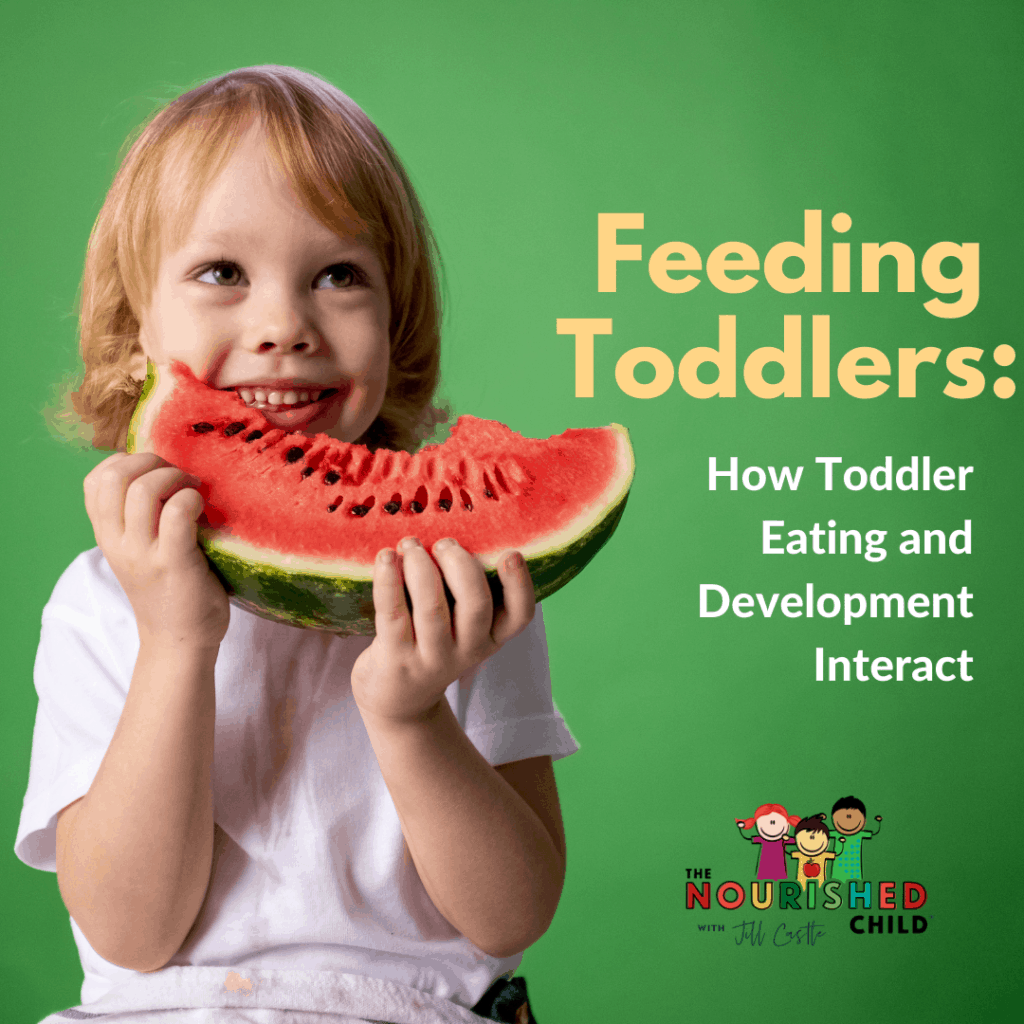
Growth and Development of the Toddler
Toddlerhood is a time of physical, cognitive, social, and emotional growth.
A toddler’s physical growth slows down to a steady state. This is a downshift from the rapid growth seen in infancy. As toddler growth slows, his appetite may decline and become erratic.
It’s not unusual to see a voracious appetite during one meal and a light or maybe non-existent appetite at the next.
How well your toddler eats from one meal to the next can be as predictable as the roll of a dice.
And these toddler eating patterns can worry parents.
Cognitive Development in the Toddler
Young children learn about their world through play. Play helps them think, understand, communicate, remember and imagine.
Because toddlers are driven to play, it’s no surprise they do this with food. That’s why it’s no big surprise for toddlers to throw food off their tray and onto the floor. And if there’s a puppy there to gobble up dropped food, that’s really fun (and a learning experience!).
The good news? Toddlers are ready experimenters and enjoy using their senses. This can be an advantage to parenting and introducing new foods.
Psycho-Social Toddler Development
Erik Erikson described toddlerhood as a time of struggle, during which the toddler figures out who he is as an individual (autonomy) and how to control himself.
The feedback he receives from the world around him helps him figure this out.
The drive to understand the world, explore and experiment is so strong, it can get in the way of eating.
Combine these desires for independence, self-control, and exploration with an unpredictable appetite and it’s no wonder your toddler causes you confusion, frustration, and worry!
Common (and worrisome) toddler eating behaviors are:
- A toddler refusing to eat or afraid to try new foods (called neophobia).
- A toddler only wanting to eat certain foods, drink all the time (not eat), or getting stuck on one food for a long period of time (food jags).
- A toddler skipping meals or snacks.
These behaviors are a natural part of toddler development. If you’re not prepared for them, they can test your patience and be the root of negative feeding at the meal table.
[Related]: My Toddler Can’t Sit Still!
How you respond to this normal behavior is more important than the behavior itself.
10 Tips for Feeding Toddlers
Keep these tips in mind when feeding your toddler.
1. Don’t Be Too Concerned about How Well Your Toddler Eats
Remember, toddler eating is unpredictable and variable. Your toddler’s cumulative food intake over the course of a week is what matters most.
Great meals are often balanced with disappointing meals.
2. Watch How You Respond When Your Child Eats
Overly praising or obvious disappointment with your child’s eating behavior may not give you the results you want, like eating enough or eating vegetables.
It’s best to have a neutral attitude and response when it comes to your child’s eating behavior.
3. Provide a Structured Feeding Environment
Keep meals and snacks on a regular and predictable schedule (about 2 to 3 hours in between eating sessions). Don’t dally at the table trying to get your toddler to eat more food.
Limit meals and snack times to about 20 minutes per meal and about 10 minutes per snack.
4. Don’t Worry if Your Toddler is Skipping Meals
This is just a result of the variable appetite that goes with toddlerhood. Offer your toddler 3 meals and 3 snacks each day.
If your toddler skips a meal or snack, know he’ll be able to eat again at the other meals and snacks throughout the day.
5. Don’t Offer the Same Food Everyday
Even though your toddler would love to eat the same foods over and over, offering them just feeds into short-order cooking.
Eventually, this will become an obstacle to getting your toddler to eat a variety of foods.
Continue to offer new foods and old foods, in different combinations. This will keep your toddler comfortable (he recognizes the old standbys), but challenges him (introducing unfamiliar foods) too.
6. Don’t Interfere with Your Toddler’s Eating
Taking over the spoon, wiping his face after each bite, or pushing him to drink more than he wants to interferes with your toddler’s ability to self-regulate his appetite and eating.
Remember, eating is one of the developmental ways you can support your toddler’s natural progression to becoming more independent.
7. Use the Division of Responsibility in Feeding
This clearly defines your responsibilities (the what, where and when of feeding) and those of your child (whether and how much to eat). You can read more about this here.
8. Allow Food Choices, But Not Too Many
Try to offer your toddler two options. Keep these within the same food group (bananas or pears; broccoli or peas; pasta or rice).
Giving your toddler a choice supports your toddler’s autonomy (and the control he’s looking for).
While we want toddlers to be in control of whether and how much they eat, we don’t want toddlers to be in charge of nutrition and feeding—that’s your job.
9. Make Tasty Meals
Toddlers often eat what looks and tastes good. When making meals, offer an option from each of the food groups.
Provide two or three food groups at snack time. This food variety will broaden your toddler’s food exposure, leading to new food preferences.
10. Check Your Feeding Style
Maintain a positive and effective feeding style. It will go a long way in helping your toddler develop a healthy relationship with food and become a good eater.
Feeding toddlers doesn’t have to be terrible, especially if you know what to expect with growth and development, and how it impacts your toddler’s eating.
Want to Learn More About Toddler Nutrition?
Check out our online classes and resources!
You may enjoy reading these:
- Toddler Multivitamins: What You Need to Know
- Healthy Finger Foods for Toddlers
- Cooking with Toddlers: 5 Easy Tasks
Helpful videos about toddlers:
What milk is best for toddlers?




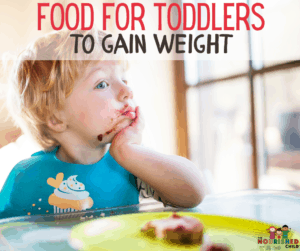
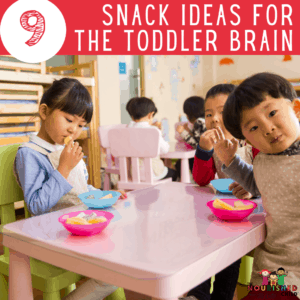
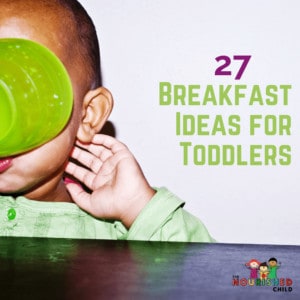
![My Toddler Won’t Eat! [Step-by-Step Guide]](https://thenourishedchild.com/wp-content/uploads/2021/04/Your-Toddler-Wont-Eat-optin-graphic-300x300.jpg)
